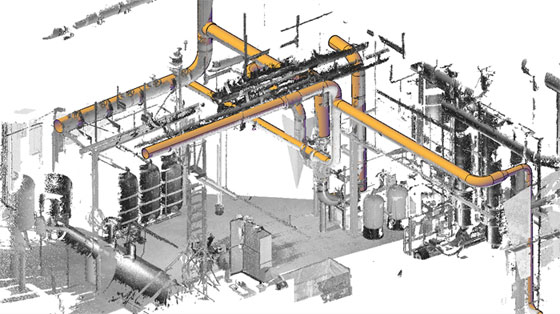The UK 2016 government mandate expresses the need for efficient BIM methodologies, e.g. stakeholder collaboration and utilization of BIM standards, in its 2011 Government Construction Strategy, and the Irish AEC/FM sector (and EU in general) are following suit with these guidelines, standards, and protocols.
The US Department of Commerce’s National Institute of Standards and Technology (NIST) calculated an estimation in 2004 that $4.8 billion was used up every year just to confirm that the captured building information symbolizes exact building condition.
Presently the PAS 1192 documents recommend Level 2 BIM as the standard of integrated practice, but the goal of Headcount Engineering is the utilization of methodologies that will qualify the test of time and be relevant now and in the future, e.g. Level 3 utilizing open standards and virtual common data environments. These industry tendencies have been led Headcount Engineering in the directed to develop best practices in relation to Terrestrial Laser Scanning (TLS) and BIM processes, protocols, standards, and methods.
At Headcount Engineering we recognize BIM is a jointly integrated practice, i.e. utilization of Integrated Project Delivery (IPD), for the AEC/FM that co-exist with lean methods that helps in decreasing waste, project period, and risk.
The BIM process and the development of object-oriented parametric process data models, i.e. BIM Models, are a global paradigm-shift in the AEC/FM including supply chain, manufacturing, production, fabrication, etc. BIM is not 3D CAD or software that can be bought; BIM is a philosophy that starts within the mind.
BIM has two forms: An IPD process of suggested lean protocols, specification, and standards to follow, and a Virtual Design & Construction (VDC) model that is a visual data rich demonstration of the built environment to be set up and to be preserve for the facilities life cycle. A BIM is an ongoing/living virtual representation of a to-be or existing built environment. Strictly a BIM model is an “nth-Dimensional BIM” (nD BIM) object-oriented information model developed in a platform neutral open machine-readable language, i.e. Industry Foundation Classes (IFC). An IFC BIM contains parametric product data that can be utilized for imitation of code compliance, accessibility, constructability and sustainability review/analyses, safety protocols, virtual assembly, fabrication, etc.
IFC uses the EXPRESS data modelling language standard for product data models which is formalized in the Standard for the Exchange of Product model data (STEP – ISO 10303).
Headcount Engineering presently gives TLS and BIM services for many big clients here in Ireland and abroad both commercial and process plants. We have made our own unique Scan-to-BIM* and Scan-vs-BIM** techniques.
The main purpose of Scan-to-BIM and Scan-vs-BIM is to make sure the As-Built BIM model is per the specifications of the design BIM model. Scan-vs-BIM is the answer of main questions: Is what was constructed/installed built according to the design BIM? To professionally and competently answer this question Headcount Engineering provides a complete dimensional control service that combines Scan-to-BIM and Scan-vs-BIM. Dimensional control is essential to compliance control during construction and to lifecycle monitoring for Operations and Maintenance (O&M) and Facilities Management (FM). Headcount Engineering uses in-house techniques to generate precise As-Built BIM models for FM that are less costly and less prone to human error than many other conventional approaches.
We use our in-house methods, protocols, and procedures for dimensional control and compliance control, which is one of our main requests from some of the major companies in the world, particularly to process plants.
In the commercial facility and process plants sectors, our clients reach to us for the development of precise As-Built BIM’s according to BIM standards so they can correctly maintain their facilities, look at energy and the associated cost, have a accurate basis for retrofit design and construction, and have a whole historical record of their accessible facilities.
Providing ground-breaking solutions in these areas can harbor many new chances in Ireland. Our clients frequently use our services because they notice the level of improvement in the quality deliverables and services Headcount Engineering gives to them. Clients are now starting to observe the reimbursement of BIM and TLS during construction and FM & OM.
Headcount Engineering has specifically recognized that, with the fast increasing use of BIM for design, construction, and FM, and a chance has occurred to resolve major problems by aligning TLS point cloud data with the BIM model. We can rapidly charge and quantify problems and promise standard compliance is correctly controlled within specified tolerances.
Reference:- www.irishbuildingmagazine.ie
 |
| Image Courtesy: webimglobal.com |
~~~~~~~~~~~~~~~~~~
Published By
Rajib Dey
~~~~~~~~~~~~~~~~~~
I have read the above details that you have posted in your blog is excellent.You have described about the purpose of BIM. It is really helpful for all.
ReplyDeleteScan to BIM Services